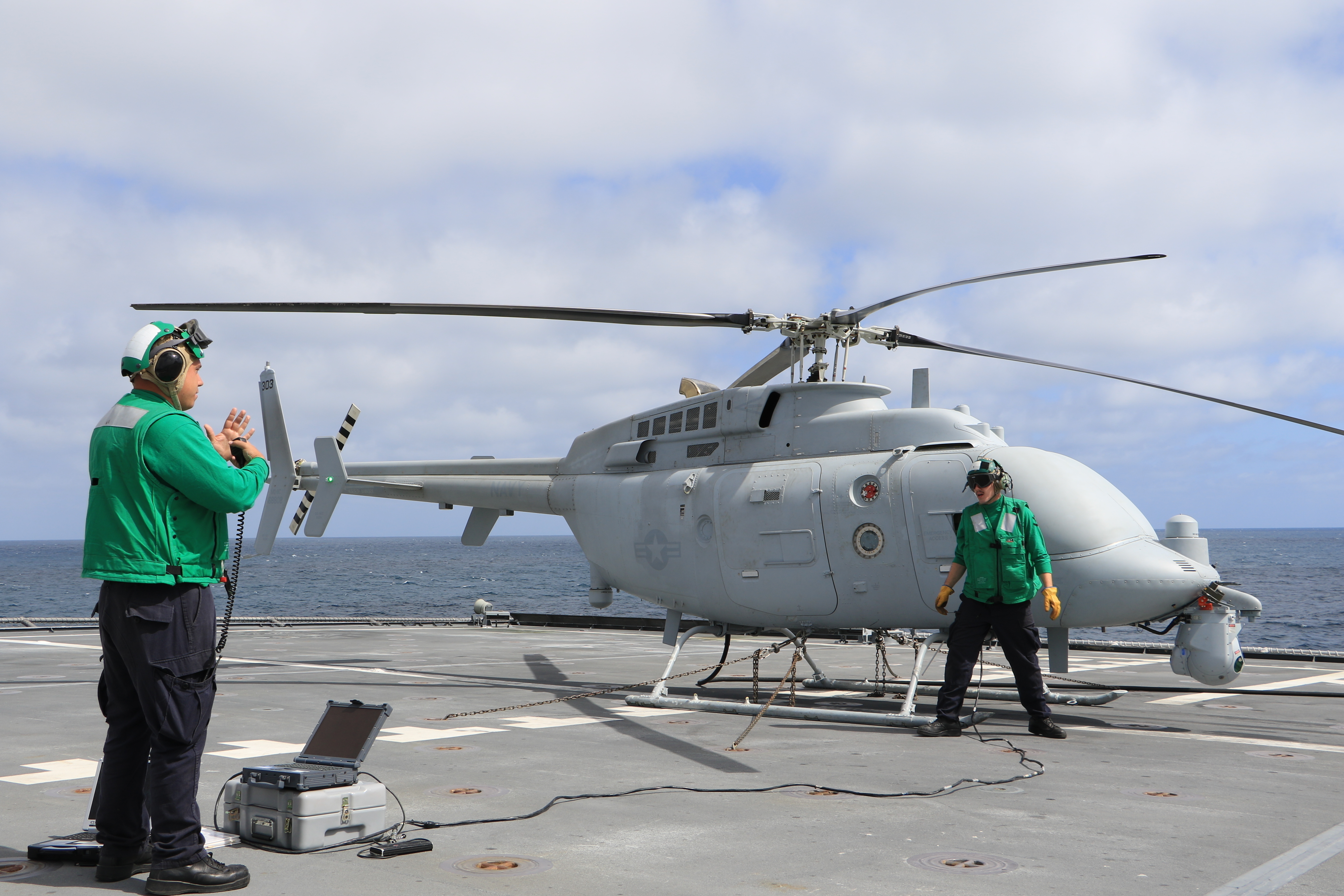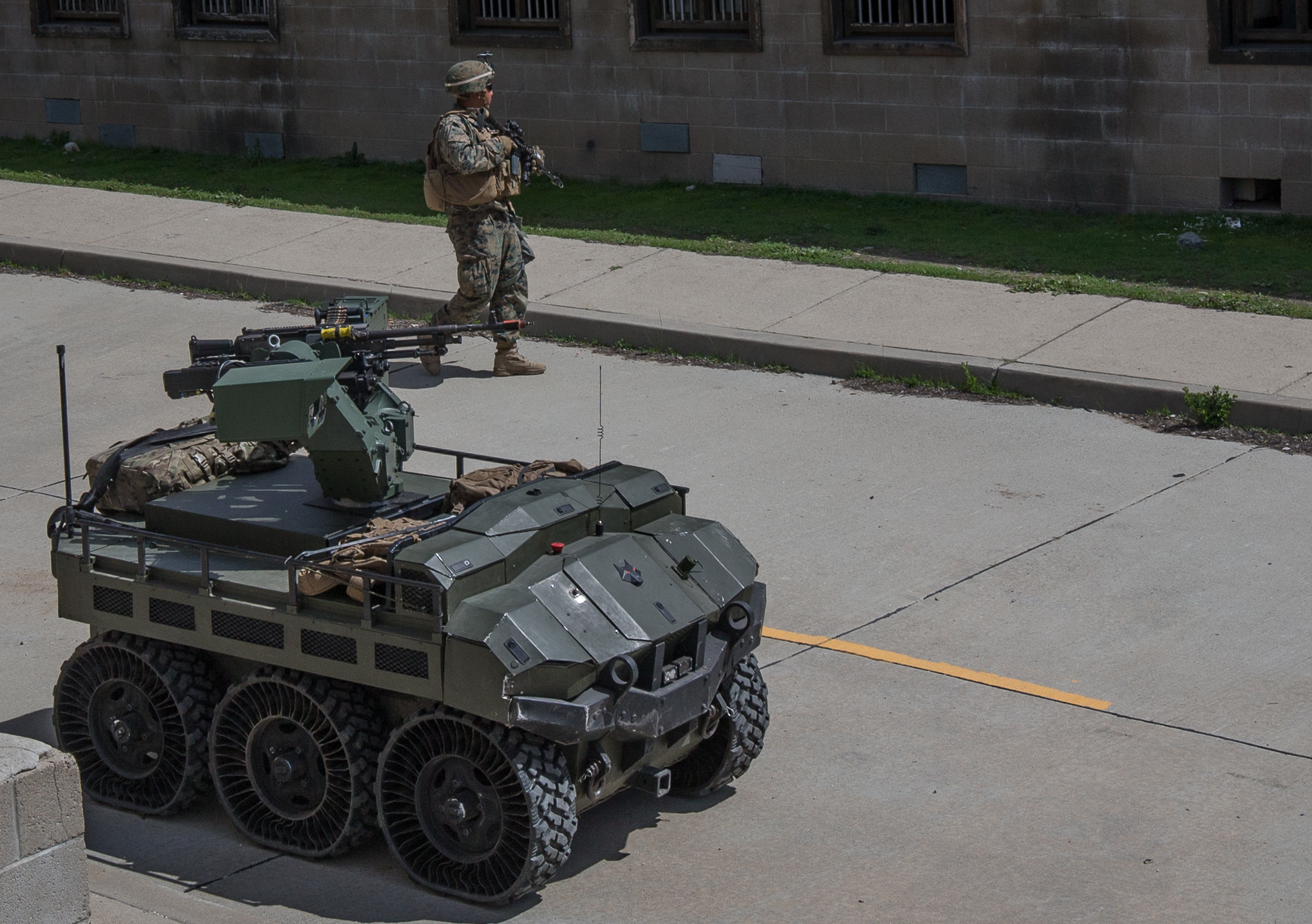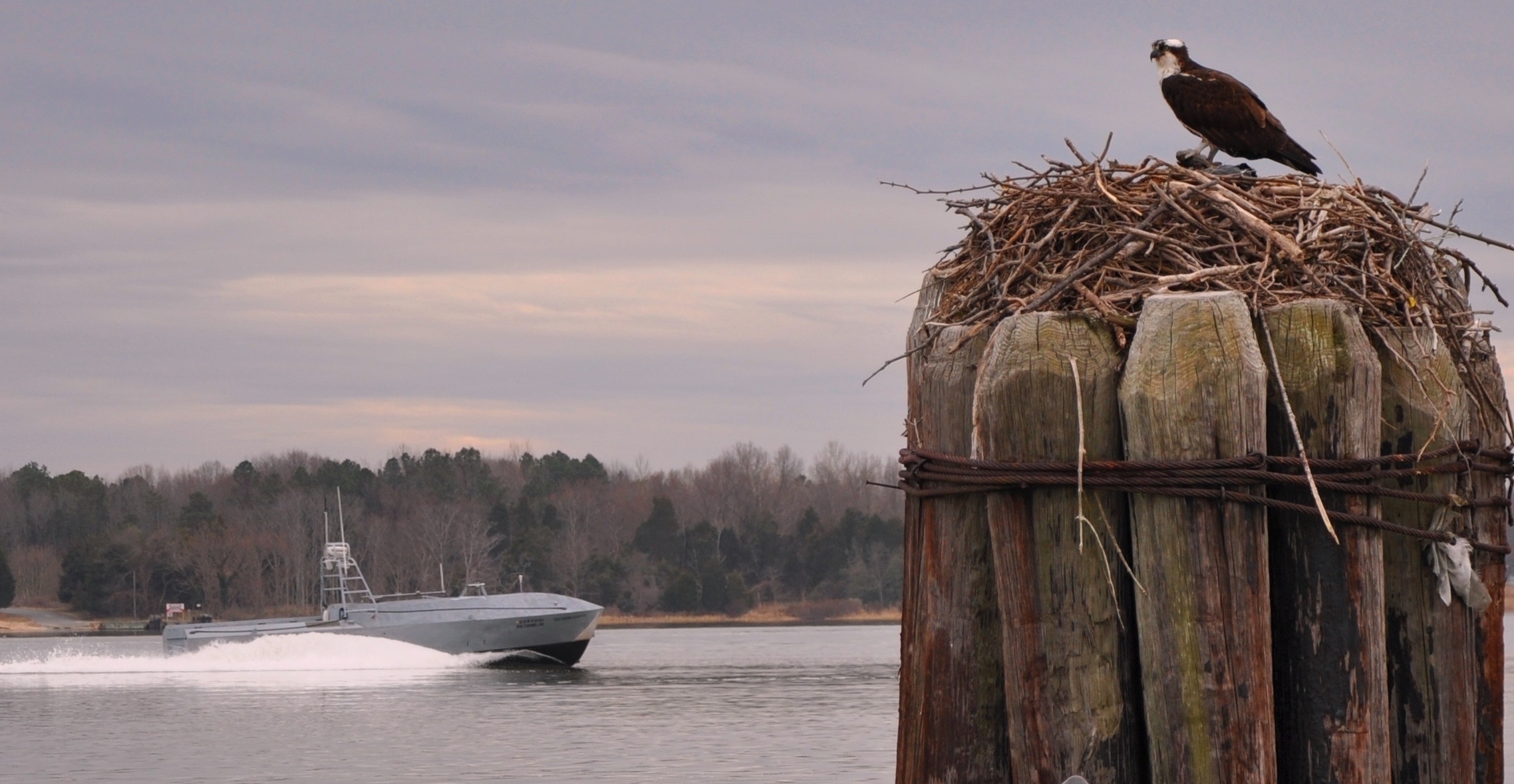
As the Navy secretariat and the chief of naval operations’ staff continue to map out how unmanned platforms would contribute to distributed maritime operations, the value of a good network – including one that can be accessed by the joint force and allies – is becoming more and more apparent.
Dorothy Engelhardt, the director of unmanned systems for the Deputy Assistant Secretary of the Navy for Ships, said today at a webinar hosted by Booz Allen Hamilton that, “the vision is, when I say the words distributed maritime operations, we mean that and you should let your imagination run with that. How do I have a fleet of manned assets under the sea, on the sea and in the air collaborating and working with unmanned assets in the fight? There’s a lot of groundwork that we recognize, specifically networks and command and control.”
She said several ongoing efforts are looking at developing the network that will allow the sea service to make the most of families of unmanned surface and undersea vessels it’s currently developing, testing and buying.
The Navy recently tapped Rear Adm. Doug Small, commander of the Naval Information Warfare Systems Command, to lead Project Overmatch, meant to “develop the networks, infrastructure, data architecture, tools, and analytics that support the operational and developmental environment that will enable our sustained maritime dominance,” according to an Oct. 1 memo from CNO Adm. Mike Gilday.
Engelhardt said that Project Overmatch is the key to “execute this in perpetuity and not just be bits and pieces that eventually kind of coalesce and come together. It is an overarching strategy that we are working through in all domains.”
Additionally, the Navy is also working on an Unmanned Campaign Plan by Vice Adm. Jim Kilby, the deputy chief of naval operations for warfighting requirements and capabilities (OPNAV N9), and Vice Adm. Jeffrey Trussler, the deputy chief of naval operations for information warfare (N2/N6).
“The Navy recognizes that currently we’re very stovepiped, we’re just aligned that way: air, surface, undersea. … The vice CNO and the CNO recognize that we’re kind of moving away from exquisite platform-centric capabilities and now we’re really looking at what does a network capability on the whole really look like. And unmanned is kind of driving that right now. Long-range fires will be the next follow,” she said.
“The CNO said, hey, I want an unmanned campaign for us: tell me where my gaps are, tell me where I’m not investing, tell me what standards I need to have, tell me what networks I need to have, et cetera. The Navy is in the process of, right now we’ve stood up what we call a war room, and in that war room we’re going through things like unmanned and long-range fires. … What is that kill chain? We’re essentially mapping out that kill chain,” and any gaps in the kill chain will become priorities for the research and acquisition communities to address.

“We’re kind of pulling the thread on that and figuring out, if I want to have distributed maritime operations that includes manned/unmanned capabilities, what does that really need to look like, from an investment perspective all the way through to sustainment,” she concluded.
Though the U.S. Navy is taking an approach that ensures entire families of systems can work together and with their manned counterparts through things like common command and control systems, common network interfaces, common combat systems and more, Engelhardt said it was also important that the joint force and allied forces can tap into the network too and either feed information to these unmanned systems or leverage the data they’re collecting.
She said the Navy is working particularly closely with the U.K. and Australia, and next year the Navy would exercise with the U.K. Royal Navy to see if each of their command and control structures – the U.S. Common Control System and the British Maritime Autonomous Platform Exploitation (MAPLE) – can accommodate each other’s’ unmanned vehicles.
“The idea there is that we recognize, in order for us to scale we need to have more of a coalition” with the other services and with allies, Engelhardt said.

Asked during the question and answer session about policy related to fully autonomous systems, she cited a 2012 Defense Department standard, 3000.09, that covers autonomous and semi-autonomous systems. Specifically, she addressed lingering concerns “if you have anything that may cross that line of being fully autonomous, and what happens.”
She said her staff has done extensive research into all domestic and international laws of armed conflict and has already briefed Kilby, with a briefing to Gilday next on the agenda before going to the secretary of the Navy and secretary of defense with a recommendation on how to ensure the service stays in compliance with the laws going forward in unmanned development.
“The good news is, no systems have tripped that wire just yet. That being said, the Navy is in the process of working up a handbook, and that handbook would be, say, if a weapons system tripped that capability (of being considered fully autonomous), what is it that program manager has to do and at what level is that going to be questioned, answered, and who will have the authority to sign off on that.”
Engelhardt said she didn’t anticipate any systems reaching that point in the next few years, given the state of autonomy technology today, but that a fully autonomous system could be fielded in the Navy within a decade or so.





